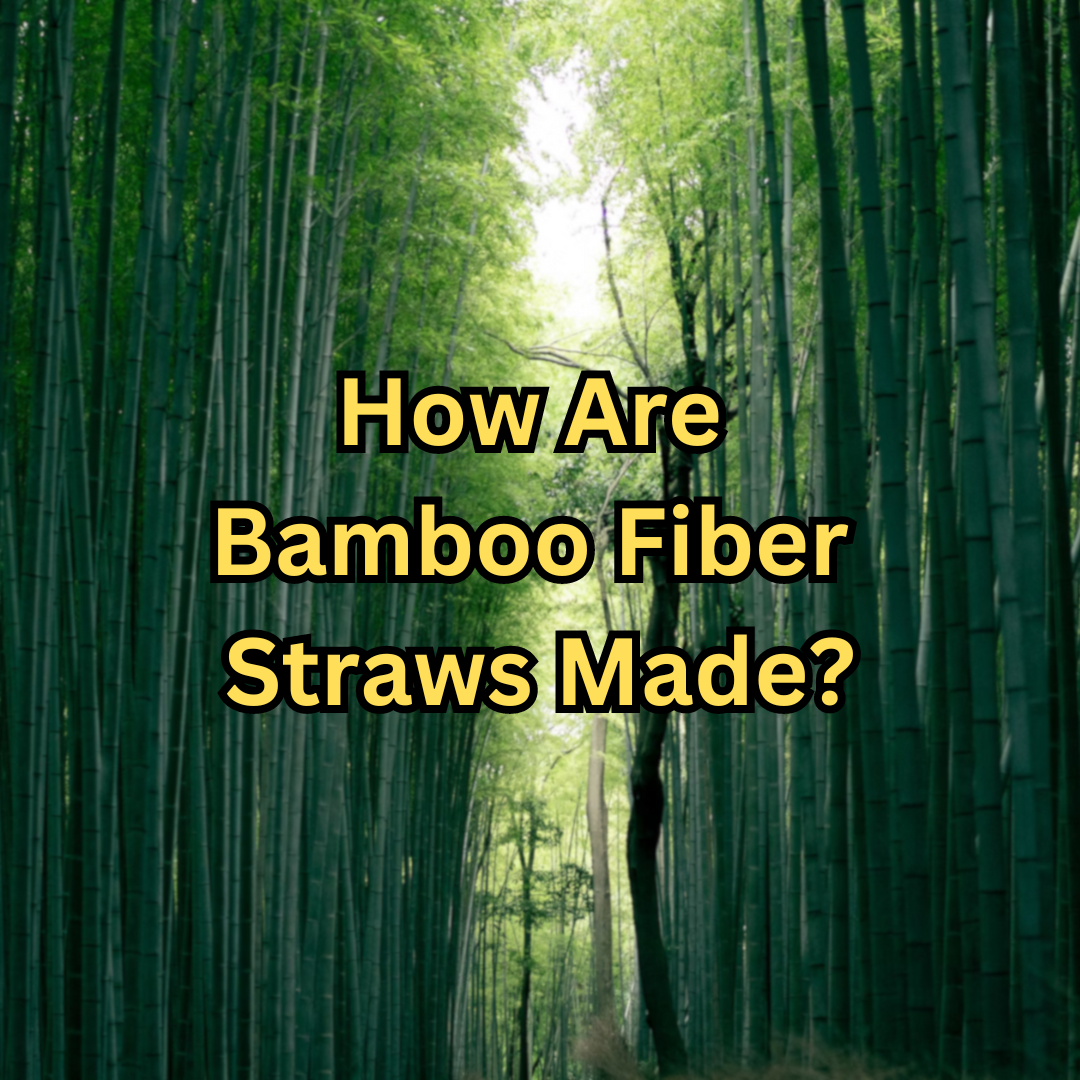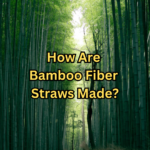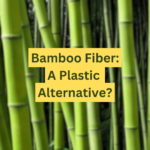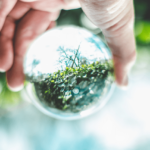
Summary:
- Eco-Friendly Manufacturing: Bamboo fiber straws are crafted from sustainably harvested bamboo, processed into fibers, and shaped into straws through eco-conscious methods, ensuring minimal environmental impact compared to plastic straws.
- Biodegradability and Compostability: These straws are not only biodegradable, breaking down within months in a compost environment, but also contribute to soil health, offering a greener alternative to plastic straws that take centuries to decompose.
- User Experience and Global Impact: Durable and suitable for all types of drinks, bamboo fiber straws are a practical choice for consumers, playing a significant role in reducing global plastic waste and promoting eco-friendly practices.
- Consumer Guidance: Selecting the right bamboo fiber straws involves considering material purity and size, and their disposal is easy through composting, underlining their role in a sustainable lifestyle and their potential to replace plastic straws.
Imagine a world where your morning smoothie or evening cocktail comes with a side of environmental responsibility. That’s the world bamboo fiber straws are creating. These eco-friendly alternatives to plastic straws are more than just a nod to sustainability; they represent a significant stride in eco-conscious living.
In this deep dive, we’ll uncover the full story of bamboo fiber straws, from their roots in lush bamboo groves to their role in your drink and beyond.
The journey begins with the bamboo itself, a plant that’s fast-growing and remarkably versatile. We’ll explore how these green giants are transformed into the fine fibers that make up your straw. It’s a process combining age-old techniques with modern eco-conscious technology. This story isn’t just about manufacturing; it’s about a commitment to the planet.
But there’s more to bamboo straws than their eco-friendly creation. We’ll examine their life cycle, from the moment they’re crafted to their ultimate disposal. Are they truly biodegradable and compostable? How do they stack up against traditional plastic straws? And importantly, how can you, as a consumer, make the most of these sustainable sippers?
By the end of this journey, you’ll see bamboo straws not just as a tool for enjoying your drinks, but as a symbol of a larger movement towards a greener, more sustainable world.
Harvesting the Source: Journey from Bamboo Groves to Fibers
The Growth and Harvesting of Bamboo
Bamboo, often hailed as a super plant, grows with astonishing speed. Imagine a plant that can shoot up almost a meter in just a day! That’s bamboo for you.
This rapid growth makes it a renewable resource par excellence. Unlike hardwood trees taking decades to mature, some bamboo species are harvest-ready in just three to five years.
When it comes to harvesting, it’s a meticulous process. Bamboo is cut, not uprooted, ensuring the plant continues to grow and protect the soil. This method supports a sustainable cycle, where the same plant can be harvested repeatedly, roughly every two to three years.
It’s a sharp contrast to the destructive nature of logging, which leaves barren land in its wake.
Transformation into Bamboo Fibers
Post-harvest, bamboo undergoes a fascinating transformation. The stalks are crushed and soaked, usually in natural enzymes, breaking them down into a mushy substance. This substance is then mechanically processed to separate the fibers.
The resulting bamboo fibers are a marvel of nature and technology. They are naturally antibacterial, a trait that remains even after processing. These fibers are strong yet flexible, making them perfect for crafting into straws. The process is mostly mechanical, minimizing chemical usage and maintaining the bamboo’s natural integrity.
This careful transformation from plant to fiber underscores the eco-friendly ethos of bamboo products.
In this journey from bamboo groves to fibers, every step is a testament to sustainable practices. It’s not just about making a product; it’s about respecting and preserving our environment. This is where bamboo straws stand out, embodying a deep-rooted commitment to a greener future.
The Art of Crafting Bamboo Fiber Straws
Shaping and Molding Process from Fiber to Straw
Once bamboo is transformed into fibers, the real magic begins. These fibers are not just tossed into a mold; they are carefully curated. The process is akin to an artist sculpting a masterpiece.
The bamboo fibers are blended with a natural binder, often a starch-based substance, to give them the right consistency. Then, they are poured into straw-shaped molds.
But it’s not just about pouring and waiting. Precision is key. The density of the fibers in the mix determines the straw’s strength and durability. Too dense, and the straw might feel like sipping through a pipe. Too light, and it could collapse like a flimsy paper tube.
The balance is crucial, and it’s achieved through a carefully monitored process.
Natural Treatment and Safety Measures for Disposable Bamboo Fiber Straws
When it comes to disposable bamboo fiber straws, safety and hygiene are top priorities. Unlike their reusable counterparts, these straws are designed for one-time use, yet they undergo an equally rigorous natural treatment process.
The bamboo fibers, already sterilized during the initial processing, are mixed with natural, biodegradable binders to form the straw.
During the shaping stage, these straws are treated with natural, food-safe agents. Think of ingredients you’d find in your kitchen, like vinegar or baking soda, which act as natural disinfectants. This ensures that each straw is free from harmful microbes and safe for direct contact with your beverage.
Post-shaping, the disposable straws are dried using energy-efficient methods, often leveraging natural sunlight. This drying not only strengthens the straw but also ensures there’s no moisture left, which could compromise its integrity.
The result is a straw that’s not just eco-friendly, but also clean, hygienic, and perfect for a single, satisfying use.
In crafting these disposable bamboo fiber straws, the emphasis is on creating a product that’s safe for both the consumer and the environment. Every straw is a testament to the commitment to a healthier, more sustainable world—one sip at a time.
Environmental Impact: Biodegradability and Compostability
The Truth About Disposable Bamboo Fiber Straws’ Biodegradability
Let’s cut through the greenwashing and get to the heart of what biodegradability really means for disposable bamboo fiber straws. These straws aren’t just ‘eco-friendly’ in name; they embody the term.
Biodegradability refers to the ability of materials to break down and return to nature. For disposable bamboo fiber straws, this means they decompose naturally, turning into compost without leaving harmful residues.
This process varies depending on environmental conditions like moisture and temperature, but generally, bamboo fiber straws break down within a few months in a composting environment.
That’s a stark contrast to plastic straws, which can linger in landfills for centuries. When you toss a bamboo straw into a compost bin, you’re not just disposing of waste; you’re contributing to a cycle that nourishes the earth.
Composting Process and Environmental Benefits
Composting disposable bamboo fiber straws is like giving back to Mother Earth. When these straws decompose, they turn into nutrient-rich compost, a valuable resource for soil health. This process of composting involves microbial activity that breaks down the straw into simpler organic compounds.
The beauty of this process is twofold. First, it reduces landfill waste, a significant environmental concern. Second, the resulting compost can be used to enrich soil, promoting healthier plant growth and a more robust ecosystem.
By choosing disposable bamboo fiber straws and composting them, you’re not just making a statement; you’re actively participating in an eco-friendly cycle that benefits our planet.
In essence, the environmental impact of these straws extends far beyond their use. By choosing them, you’re supporting a sustainable system that nurtures the planet, from the soil to the skies.
From Use to Disposal: The Lifecycle of a Disposable Bamboo Fiber Straw
User Experience and Durability
When you first hold a disposable bamboo fiber straw, you’ll notice its sturdiness. Despite being designed for single use, these straws don’t compromise on durability.
They won’t get soggy like paper straws or break like plastic ones. Whether you’re stirring a hot drink or sipping a cold smoothie, they hold up remarkably well.
The user experience with these straws is surprisingly pleasant. They don’t transfer heat or cold, ensuring your drink’s temperature remains consistent from the first sip to the last. And let’s not forget the feel-good factor.
Knowing you’re using a product that’s kind to the planet enhances the experience, making every sip a small victory for the environment.
Post-Use Disposal and Decomposition
Once you’ve enjoyed your drink, disposing of a disposable bamboo fiber straw is straightforward. Unlike plastic straws, which end up in landfills or oceans, these can be responsibly composted. If you have a home compost bin, just toss it in there.
In a composting setup, these straws break down efficiently, usually within a few months. They decompose into organic material, contributing to nutrient-rich soil. It’s a clean end to a product’s life cycle, ensuring that what came from the earth returns to it in a beneficial form.
This natural decomposition process reflects the true essence of eco-friendliness, closing the loop in the most sustainable way possible.
Disposable Bamboo Fiber Straws vs. Plastic: An Eco-Friendly Comparison
Environmental Footprint of Disposable Bamboo Fiber Straws vs. Plastic Straws
When we talk about the environmental footprint, disposable bamboo fiber straws are miles ahead of plastic straws. The key lies in their production and end-of-life impact.
Bamboo grows fast, requires no pesticides, and is harvested sustainably, making its cultivation a low-impact affair. In contrast, plastic straws are petroleum products; their production is resource-intensive and contributes significantly to carbon emissions.
The disposal paints an even starker contrast. Bamboo straws are biodegradable and compostable, integrating back into the ecosystem without a trace. Plastic straws, on the other hand, are a pollution nightmare. They take hundreds of years to break down, often ending up in oceans, harming marine life.
The difference in environmental impact is clear: bamboo straws tread lightly on the planet, while plastic straws leave a heavy, damaging footprint.
Why Disposable Bamboo Fiber Straws are the Future of Sustainable Sipping
Here’s a bold claim: disposable bamboo fiber straws aren’t just an alternative; they’re the future of sustainable sipping. Why? Because they align with a growing global consciousness about environmental stewardship.
These straws offer a practical solution that meets our modern needs without compromising the planet’s health.
They’re user-friendly, effective, and most importantly, they close the loop in the lifecycle of a product. By choosing bamboo straws, consumers are not just rejecting plastic; they’re embracing a mindset that values sustainability, responsibility, and proactive environmental care.
In a world grappling with plastic pollution, bamboo fiber straws represent a hopeful step towards a greener, cleaner future.
Taking the Next Step: How to Choose and Use Disposable Bamboo Fiber Straws
Selecting the Right Disposable Bamboo Fiber Straws
Choosing the right disposable bamboo fiber straws can feel like navigating a maze. Here’s your simple guide: first, look for straws that are 100% bamboo fiber. Avoid anything with added plastics or chemicals, as these can compromise biodegradability.
The best straws are those with natural color – they haven’t been overly processed. See this product on Amazon as an example.
Next, consider the size and diameter. For thicker drinks like smoothies, you’ll want a wider straw. For standard drinks, a regular size works just fine. Also, think about the length. A straw too long for your glass is awkward; too short, and you’re missing out on convenience.
Tips for Properly Disposing of Your Bamboo Fiber Straws
After enjoying your drink, proper disposal of your bamboo straw is key. If you have a compost bin, that’s the best place for it. These straws will naturally break down in a composting environment, enriching the soil.
No compost bin? No problem. You can still dispose of them responsibly. Burying them in your garden is a great option. They’ll decompose and contribute to soil health.
If you must throw them away, rest easy knowing they’ll break down much faster than plastic in a landfill. But remember, the best way to honor the eco-friendliness of these straws is by composting.
Choosing and using disposable bamboo fiber straws is more than a mere action; it’s a statement of your commitment to the planet. Every straw you use and dispose of responsibly is a step towards a greener, cleaner earth.
The Bigger Picture: Disposable Bamboo Fiber Straws and Global Sustainability
Role in Reducing Plastic Waste
Disposable bamboo fiber straws are more than just a trendy eco-product; they’re a powerful tool in the global fight against plastic waste. Each bamboo straw used represents one less plastic straw that could end up in our oceans, harming marine life and polluting our waters.
The statistics are alarming: millions of plastic straws pollute our environment every year, taking centuries to decompose. By switching to bamboo, we’re not just reducing our plastic footprint; we’re actively participating in a movement to save our oceans and wildlife.
Bamboo straws degrade in a fraction of the time it takes for plastic straws to break down, meaning they don’t linger in the environment causing harm. This shift to bamboo has the potential to significantly reduce the volume of plastic waste, an essential step in tackling the global plastic pollution crisis.
Impact on Global Eco-Friendly Practices
The rise of disposable bamboo fiber straws isn’t just a change in consumer habits; it’s a shift in global eco-friendly practices. These straws are sparking conversations about sustainability and encouraging people and businesses to rethink their use of single-use plastics. They’re a symbol of a larger commitment to environmental responsibility.
This global shift isn’t just about reducing waste; it’s about changing mindsets. When people choose bamboo straws, they’re often inspired to make other eco-friendly changes in their lives.
This ripple effect can lead to greater demand for sustainable products, encouraging manufacturers to innovate and adopt greener practices. In this way, disposable bamboo fiber straws are not just a product, but a catalyst for a more sustainable world.
Frequently Asked Questions
Are Bamboo Fiber Straws Really Better Than Plastic? Absolutely, bamboo fiber straws outshine plastic in every aspect of environmental impact. They biodegrade within months, not centuries like plastic. Every time I switch from a plastic to a bamboo straw, I feel like I’m making a small yet significant contribution to saving our oceans and wildlife. Plus, they don’t add to the plastic pollution choking our planet.
Can I Really Compost My Disposable Bamboo Straws at Home? Yes, you can! I compost mine all the time. It’s astonishingly easy and satisfying. They break down into nutrient-rich compost, helping your garden flourish. It’s a win-win: reducing landfill waste and enriching your soil.
How Long Do Bamboo Fiber Straws Last in Drinks? Bamboo fiber straws are impressively durable. I’ve used them in everything from hot coffee to icy smoothies, and they’ve never gone soggy or broken apart. They maintain their integrity throughout the drink, which is more than I can say for those flimsy paper straws.
Are Bamboo Straws Safe and Hygienic to Use? Absolutely, they’re naturally antibacterial and undergo stringent safety measures. The straws are boiled and naturally treated, ensuring they are completely safe for your drinks. I always feel confident using them, knowing they’re hygienic.
How Do I Choose the Best Bamboo Fiber Straws? Look for 100% bamboo fiber straws with natural color. Avoid anything with added plastics. Also, consider the size and diameter based on your drink type. Choosing the right straw enhances your drinking experience while being eco-friendly.
Do Bamboo Fiber Straws Really Make a Difference in Global Sustainability? They do more than you might think. By choosing bamboo straws, we’re not just cutting down on plastic waste; we’re part of a bigger movement towards sustainable living. It’s a simple choice that has a ripple effect, inspiring broader changes in eco-friendly practices globally.
Can Bamboo Fiber Straws Truly Replace Plastic Straws in Everyday Use? Yes, and they should. They offer all the functionality of plastic straws but without the environmental toll. I’ve seen cafes and restaurants make the switch, and customers love it. It’s a small change that can make a big difference.
Are There Any Drawbacks to Using Bamboo Fiber Straws? The only drawback is that they’re not as widely available as plastic straws. But that’s changing rapidly as more people and businesses adopt eco-friendly practices. The slight inconvenience is a small price to pay for a healthier planet.



